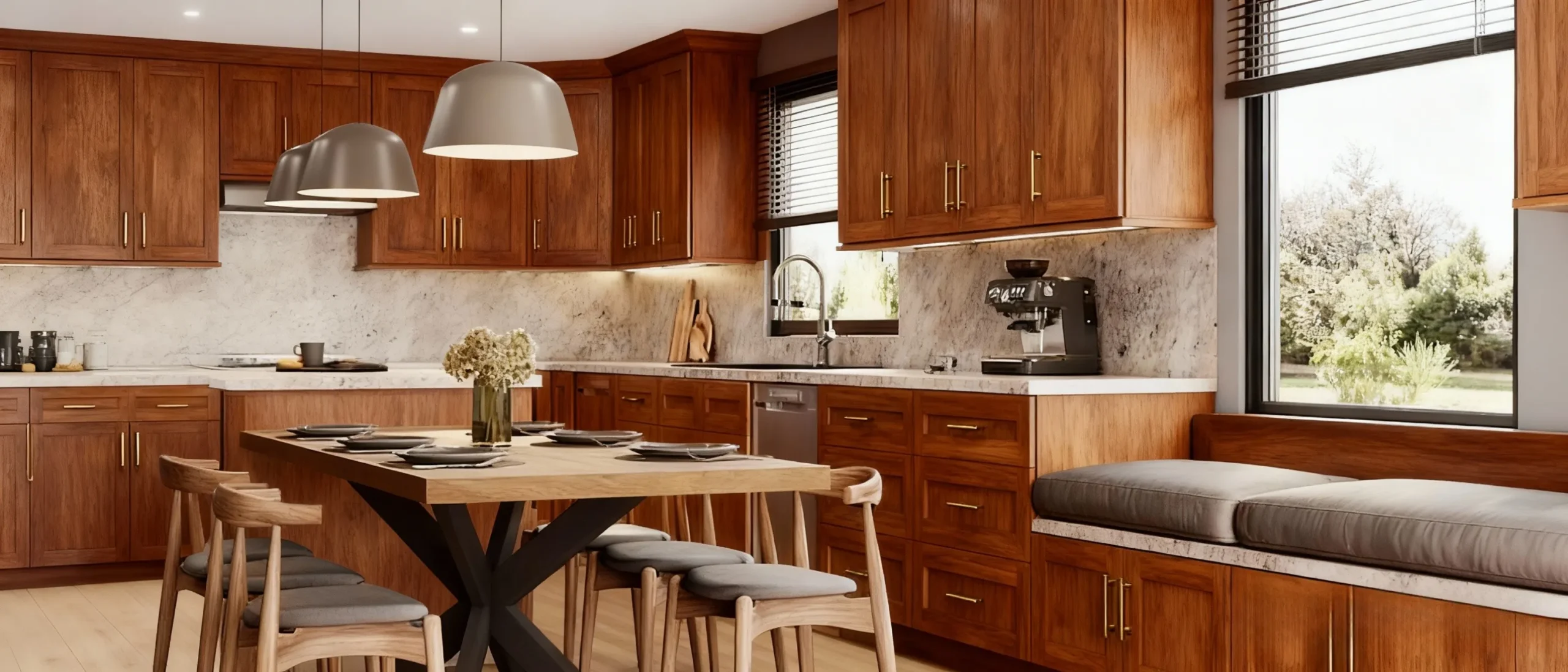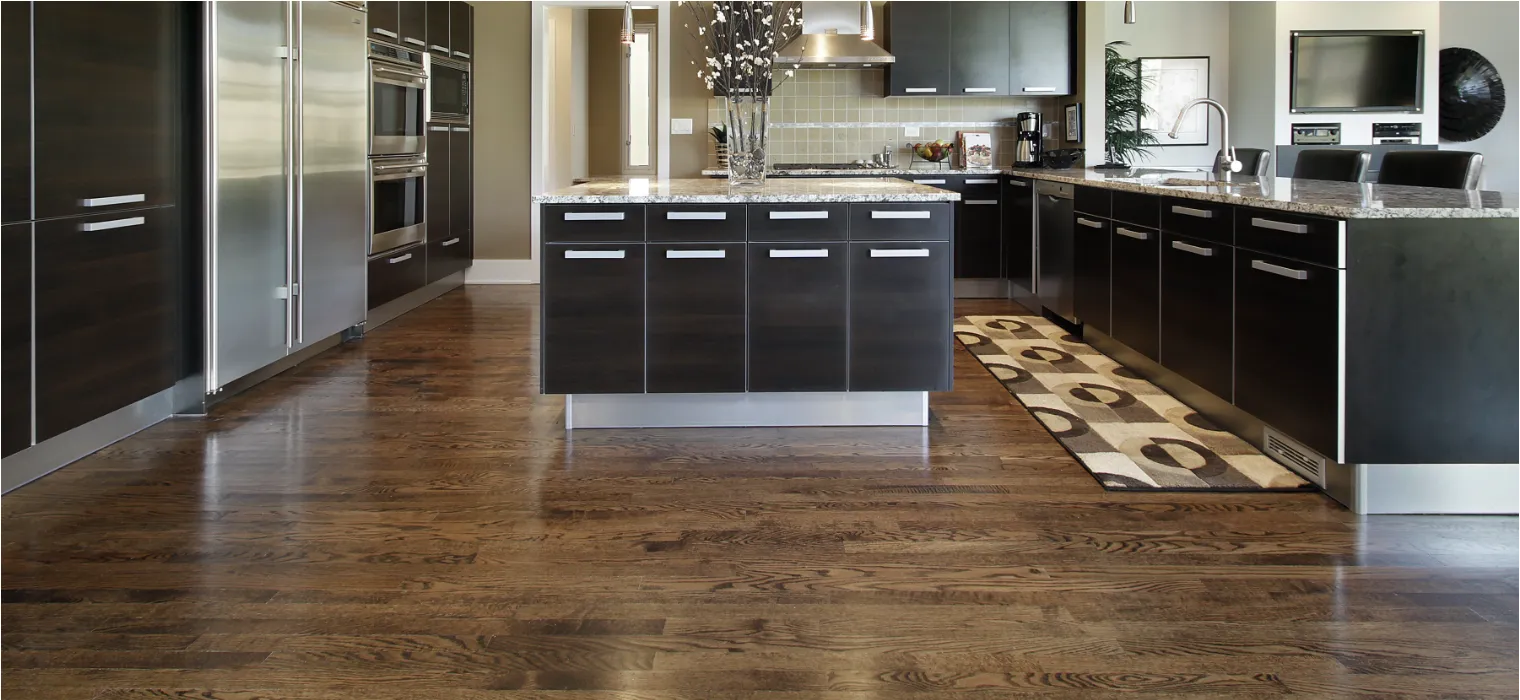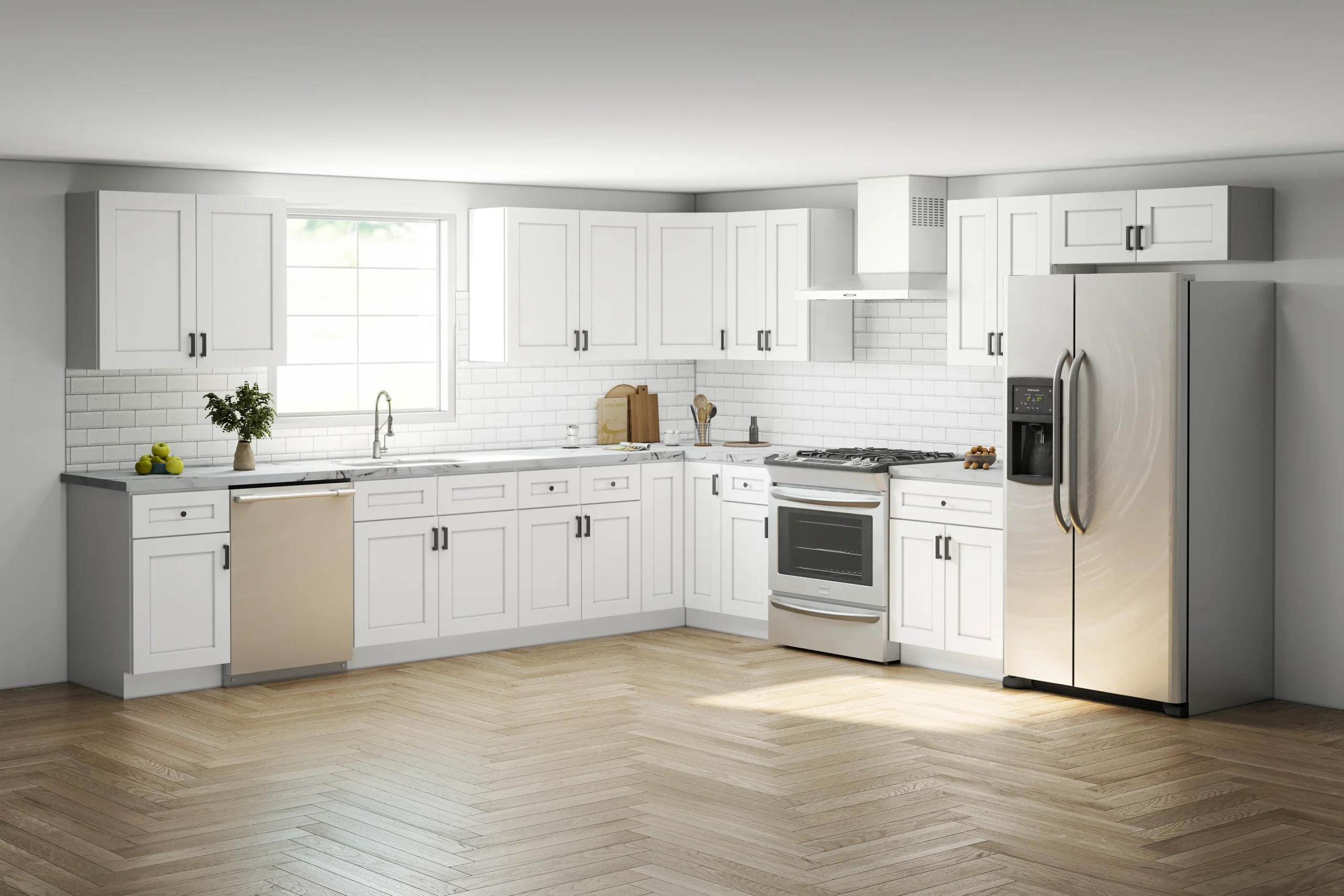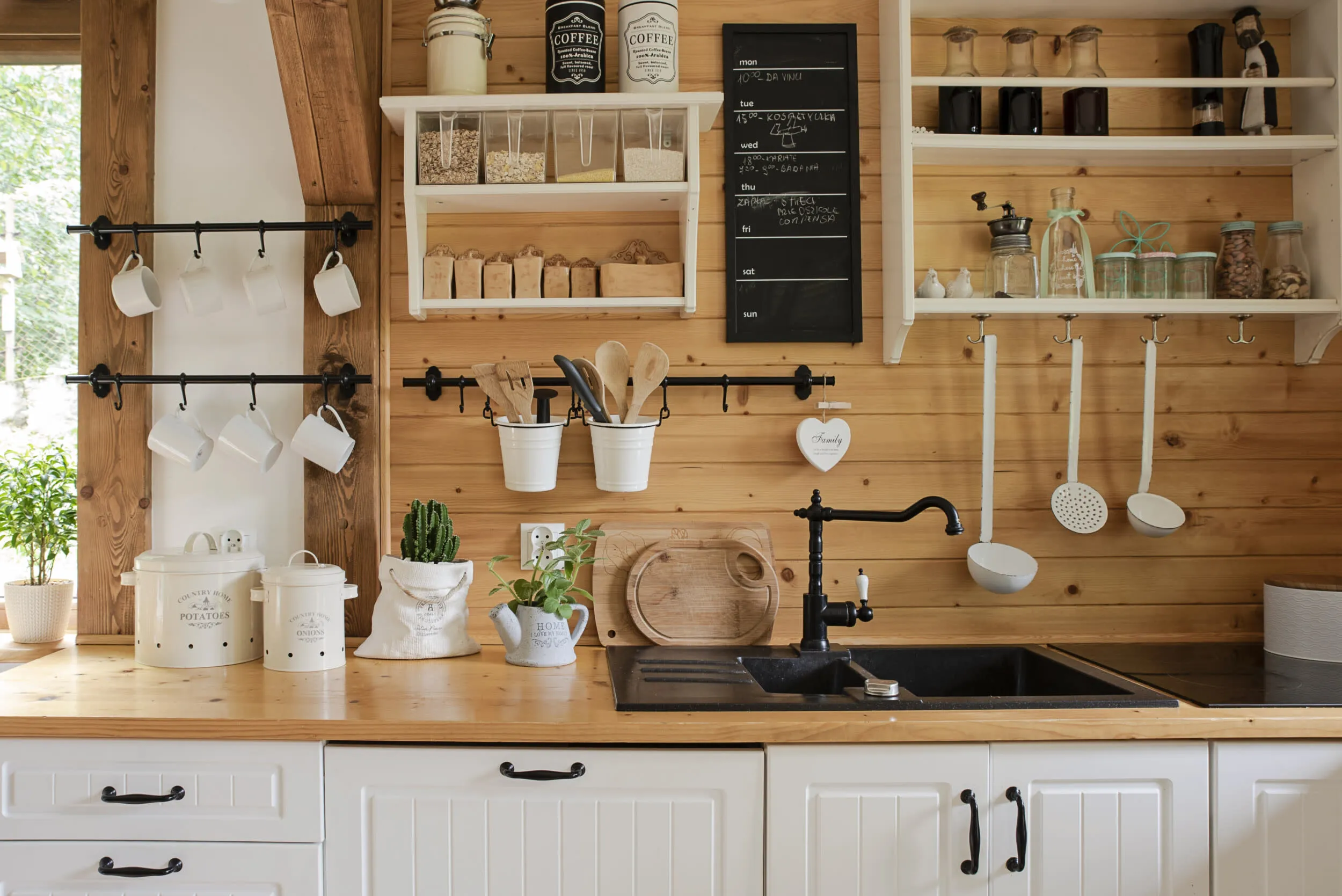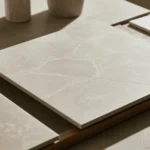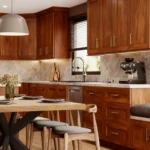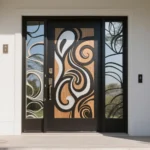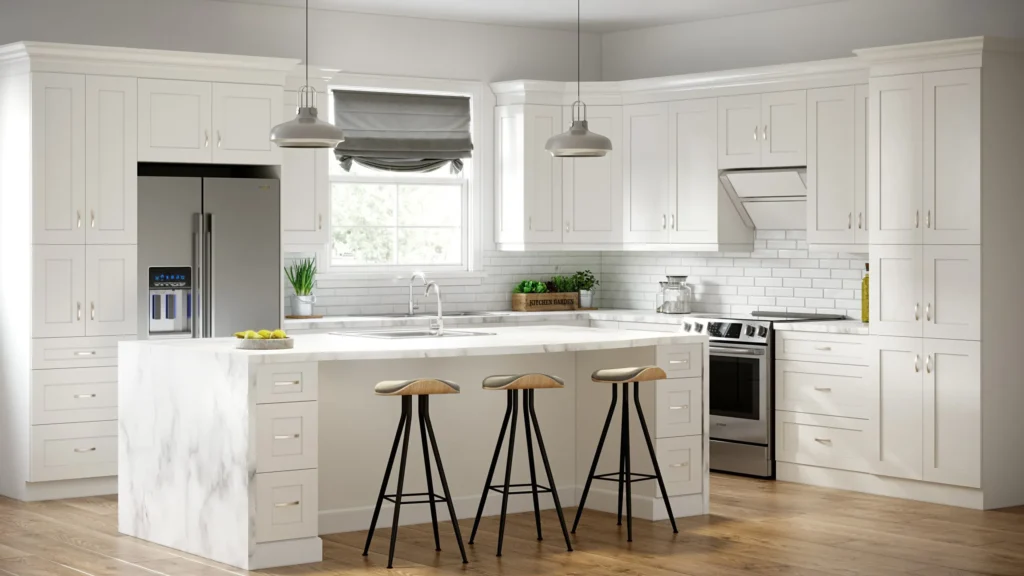
Trends change fast. Your kitchen should not. Shaker doors keep lines clean, costs sane, and choices simple. Here is how to use them well, now and later.
Shaker style stays relevant because it balances form and function. Flat frames, recessed panels, and right angles give a calm base. Shape, color, hardware, and lighting shift the mood from classic to modern without fighting the bones.
Below, each question gives a quick path first. Then you get deeper rules, mini-checklists, and clear tables you can copy into your plan.
What makes Shaker cabinets different?
Shaker doors use a flat frame and a recessed center panel. The look is simple, square, and honest. This geometry pairs with almost any color, counter, backsplash, or hardware.
Shaker works because it sets a quiet backdrop. You can keep it traditional with warm paint and curved pulls. Or push modern with slim rails, simple edges, and matte finishes. The frame does the organizing; details set the tone.
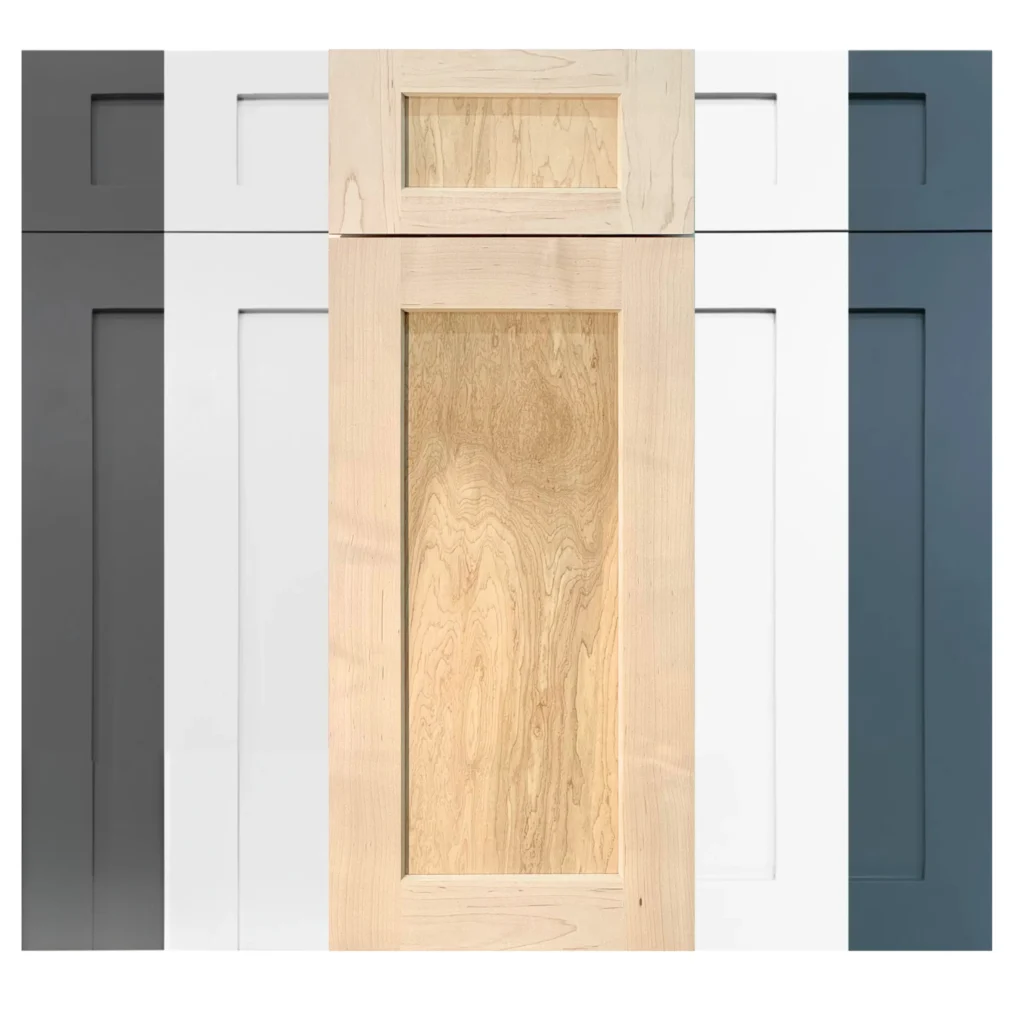
Key traits
- Five-piece frame-and-panel construction.
- Square edges and clean corners.
- Minimal ornament; function first.
Anatomy & options
| Part | Typical choice | Modern tweak |
| Rail & stile | Square edge | Micro-bevel or eased edge |
| Panel | Recessed | Extra-flat center |
| Gap/detail | Light reveal | Tight tolerances |
How to use it well
Start simple. Pick a square-edge frame with tight reveals and a flat center panel. Avoid heavy profiles if you want a modern read. Keep door gaps consistent and narrow. Use full-overlay boxes for cleaner lines. Add soft-close hinges and slides to match the quiet look with quiet movement. In open-plan spaces, repeat Shaker proportions on panels, appliance fronts, and end caps. The eye reads one system, so the room feels calmer.
Are Shaker kitchens still in style?
Yes. Shaker is a stable base that bends with the room. It reads classic in warm colors, modern in neutrals, and bold in deep hues. It adapts as trends come and go.
You can update without ripping out doors. Change hardware, lighting, or wall color. Swap a busy backsplash for a slab. The frames stay; the fashion moves.
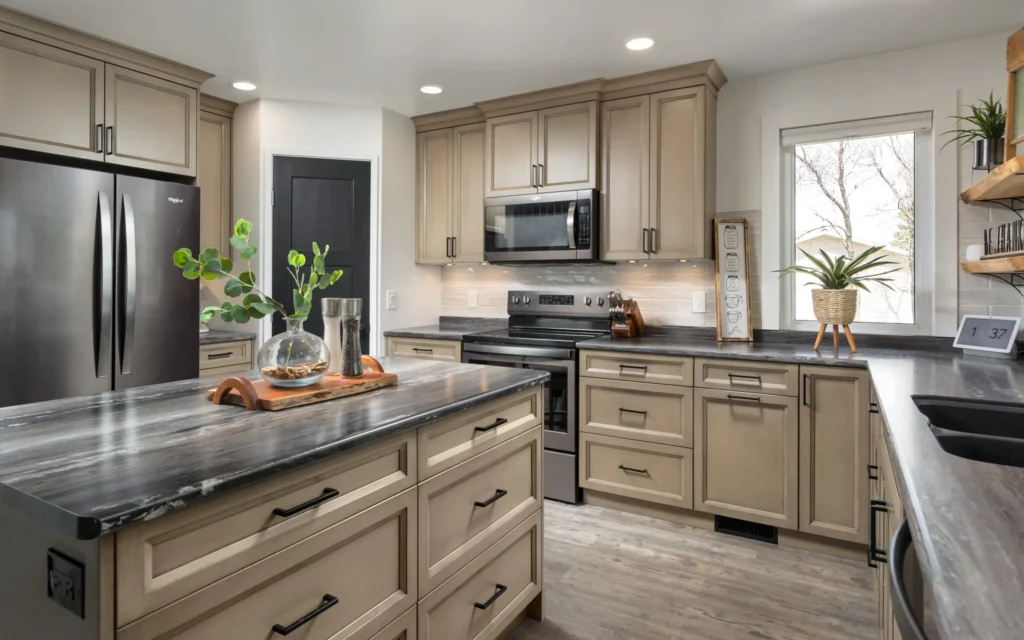
Why it lasts
- Proportions are simple and human-scaled.
- Details can change while frames stay put.
- Works in small flats and large homes alike.
Update levers
| Element | Quick refresh | Big refresh |
| Hardware | Finish & length | New hole spacing |
| Lighting | Warmer pendants | Track + under-cab strips |
| Backsplash | Quiet tile | Full-height slab |
Keep it current
Use matte or satin paint to cut glare. Choose slimmer pulls and simpler edges. Balance warm wood with cool stone so the palette feels layered, not flat. Keep sightlines clear; let frames organize walls while counters and lighting set the mood.
Shaker or flat-panel: which suits my home?
Flat-panel (slab) doors read ultra-modern. Shaker keeps detail but stays quiet. If your home has trim and panel doors elsewhere, Shaker often bridges old and new better.
Choose Shaker when you want texture without noise. Choose slab when you want the most minimal look and super-smooth fronts. Both pair with modern counters and lighting.
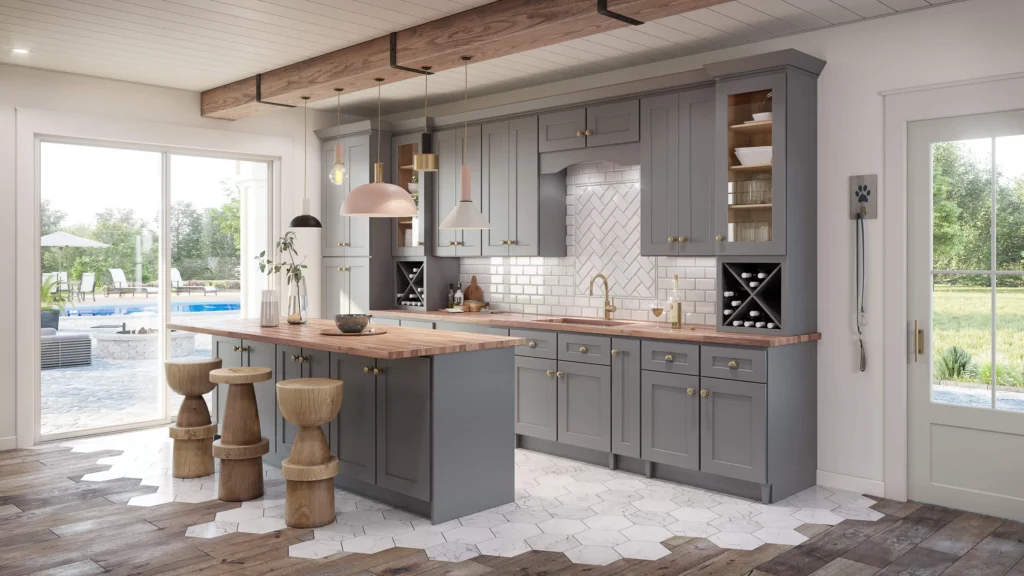
Quick chooser
| Question | If yes | Pick |
| Do you have baseboard/crown trim? | Yes | Shaker |
| Do you want zero lines? | Yes | Slab |
| Do you prefer easy touch-up? | Yes | Shaker |
Design note
A hybrid works well: slab drawers for a sleek line, Shaker doors for visual structure. Use one hardware style across both so the room reads cohesive.
What door rail width looks modern?
Slimmer rails look more current. Aim for 2–2.5 inches on standard doors. Wider rails (3 inches or more) read traditional and heavy.
Match rail width to door size. Small doors need slimmer rails to avoid crowding the panel. Large pantry doors can hold slightly wider rails without losing balance.
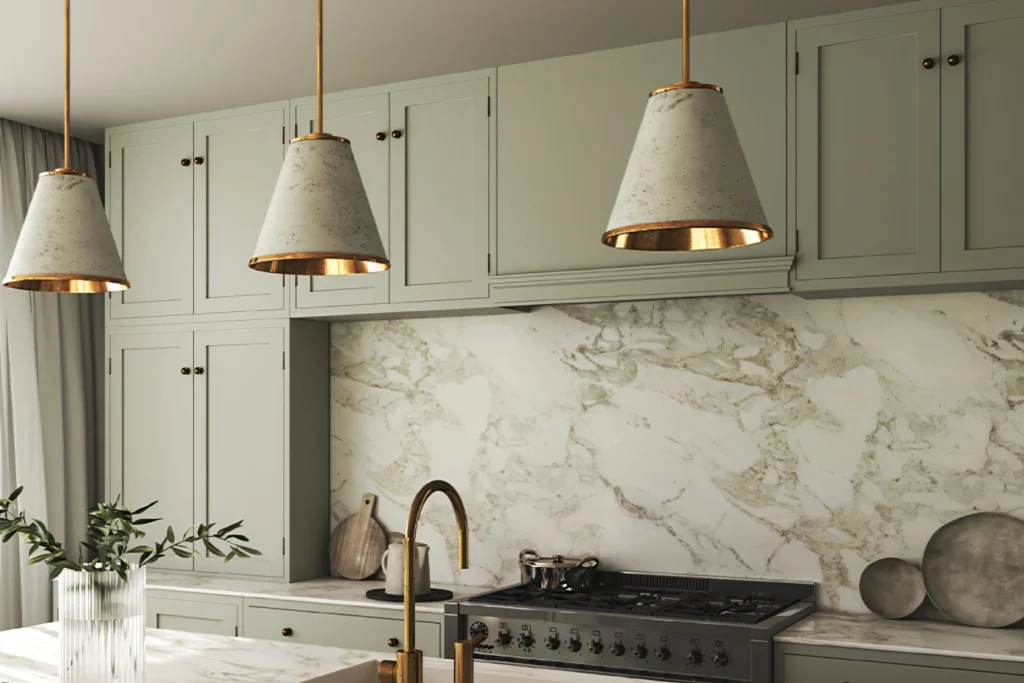
Rail width guide
| Door size | Modern rail | Classic rail |
| Small drawer | 1.5–2″ | 2.5–3″ |
| Standard door | 2–2.5″ | 3–3.25″ |
| Tall pantry | 2.25–2.75″ | 3–3.5″ |
Why it matters
Slim rails expand the panel visually, which lightens the wall. They also align better with slim pulls and thin countertops. Keep edges eased so they wear well and wipe clean.
Which colors work best with Shaker?
Neutrals and nature tones love Shaker. White and cream feel bright. Putty, mushroom, and greige feel calm. Deep navy, forest, or charcoal look modern, especially with matte finishes.
Choose one main color and a support color. Make the island a shade deeper or lighter for quiet contrast. Use wood floors or shelves to warm the palette.
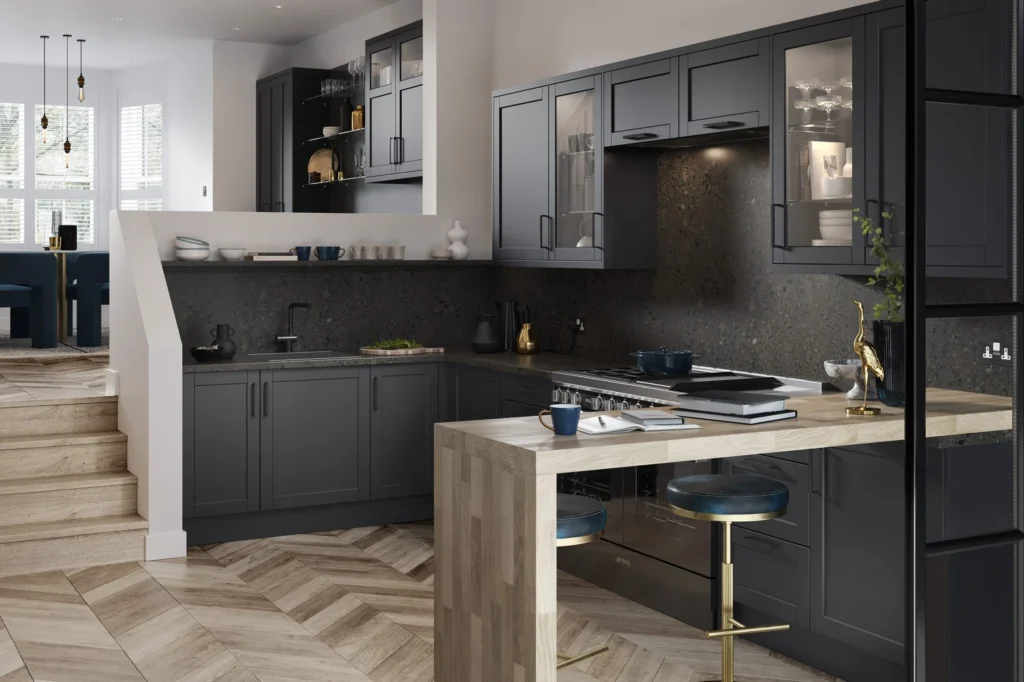
Color playbook
| Mood | Cabinet color | Pair with |
| Airy | Warm white | Light wood, soft gray stone |
| Calm | Greige/putty | Brushed metal, linen wall |
| Bold | Navy/charcoal | Warm brass, oak floor |
| Organic | Sage/mushroom | Textured tile, stone slab |
Lighting test
View samples in morning and evening light. Warm LEDs shift colors. Paint two coats on a big board and place it near counters and backsplash samples. Pick after you see the full kit together.
What hardware suits Shaker doors today?
Long, thin pulls feel modern. Simple knobs feel classic. Matte finishes hide prints. Brushed finishes blend with appliances. Choose one metal and repeat it across the room.
Scale matters. Use longer pulls on tall doors and wide drawers for better grip and cleaner lines. Keep centerlines consistent so the wall reads organized.
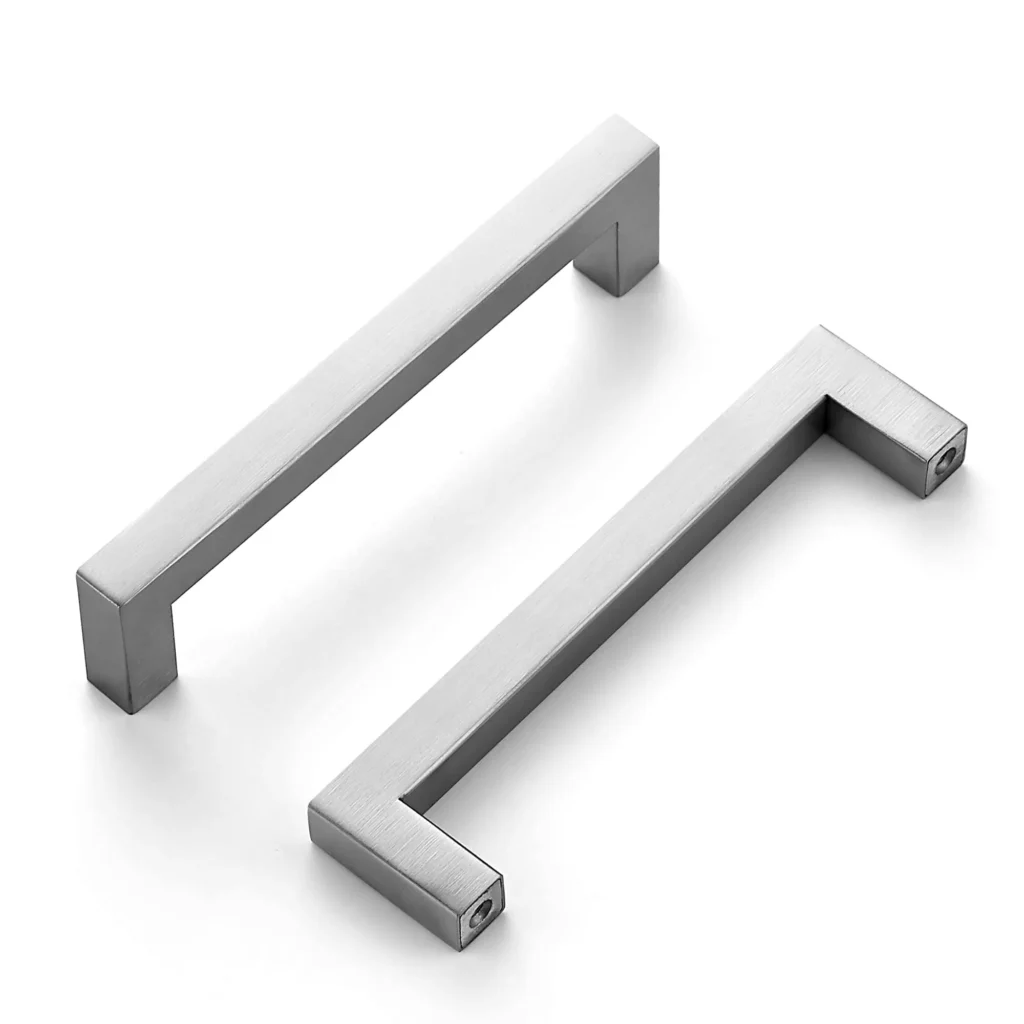
Hardware chooser
| Location | Best pick | Size cue |
| Small drawers | Knob or 5–6″ pull | Hand-width |
| Wide drawers | 8–12″ pull | About 1/3–1/2 width |
| Tall pantry | 12–14″ pull | Strong leverage |
Placement rules
Mount pulls horizontally on drawers and vertically on doors. Align the bottom of door pulls to a common datum. On double doors, mirror the pulls. Use a template so holes match across the kitchen.
Which countertops pair best with Shaker?
Shaker pairs with many tops. Quartzite or granite handle heat and wear. Engineered quartz is easy to clean. Sintered slabs/porcelain look sleek and resist stains. Wood warms seating zones.
Pick simple edges—square or small radius. Choose honed or matte to hide prints. Use polished when you want fast wipe-downs and extra light bounce.
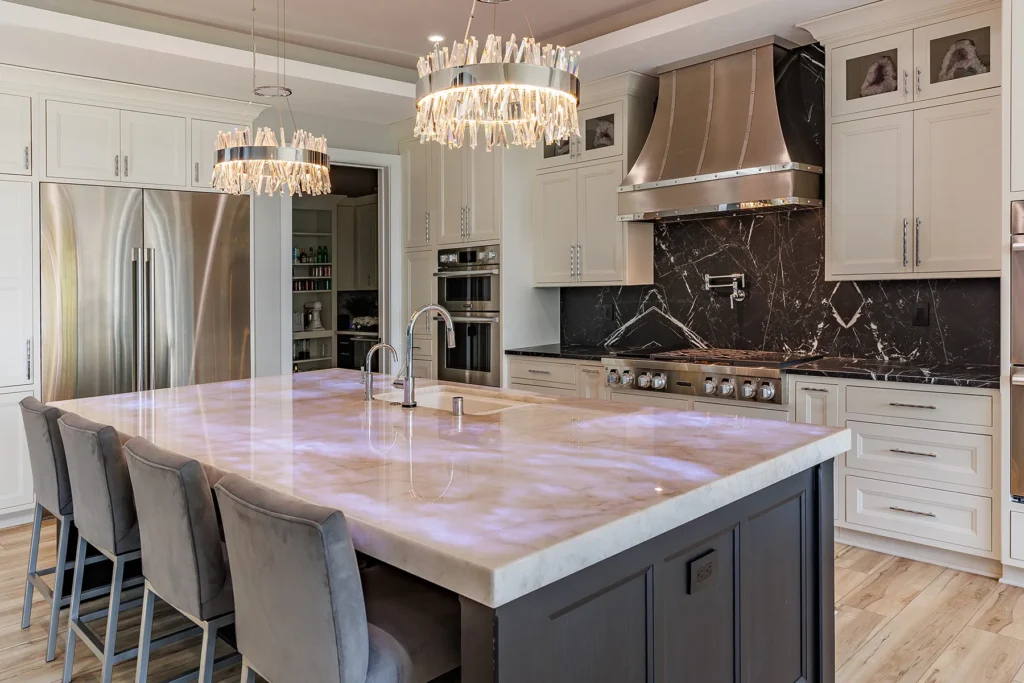
Counter comparison
| Material | Strengths | Watch-outs | Best spot |
| Quartzite/granite | Heat, scratch, natural | Seal as needed | Heavy prep |
| Engineered quartz | Stain, easy care | Heat caution | All-purpose |
| Sintered/porcelain | Thin, stain-proof | Brittle corners | Sleek modern |
| Wood | Warm, repairable | Water care | Seating/baking |
Visual balance
Busy stone plus busy backsplash feels chaotic. If your stone has movement, pick quiet tile. If your stone is calm, a patterned tile can add interest. Keep one hero, not two.
What backsplash complements Shaker lines?
Subway tile, stacked rectangle, or a stone slab all work. Stacked layouts read modern. Offset brick reads classic. A full-height slab looks rich and quiet.
Match grout to tile for a smooth wall. Contrast grout when you want graphic lines. Keep outlets aligned and consider low-profile covers or under-cabinet power strips.
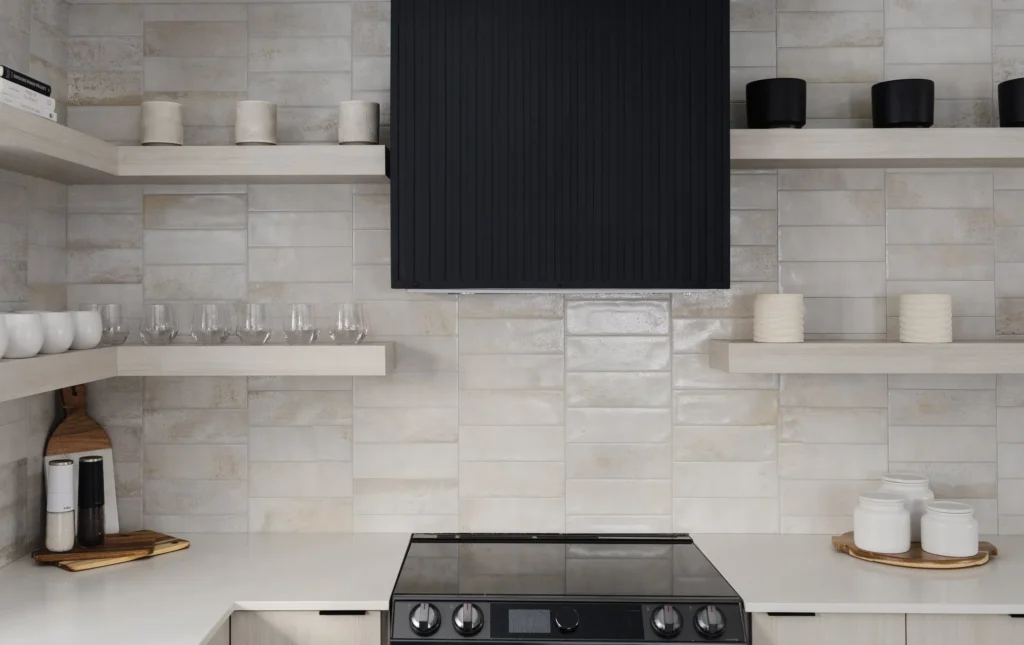
Backsplash matrix
| Look | Material | Grout | Note |
| Minimal | Slab | None | Fewer lines, easy wipe |
| Modern | Stacked tile | Match | Clean vertical/horizontal |
| Classic | Subway brick | Slight contrast | Soft texture |
Practical tip
End the backsplash at cabinet edges or window lines, not at random. If you have open shelves, carry tile to the shelf height for a finished look.
Can two-tone Shaker cabinets look balanced?
Yes. Keep one constant—countertop or hardware—and vary cabinet color by zone. Use darker lowers with lighter uppers for balance. Or make the island a deeper tone.
Repeat the accent color at least twice so it feels planned. Add a wood note to connect warm and cool tones.
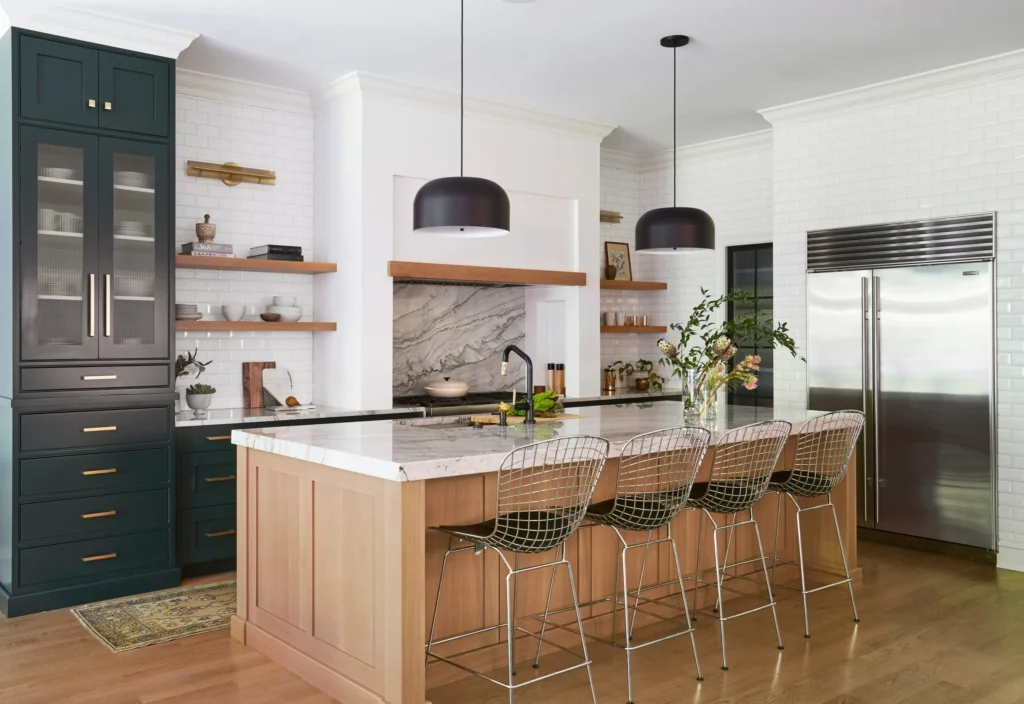
Two-tone rules
| Move | Why it works |
| Dark base + light uppers | Anchors the room, keeps it bright |
| Island as accent | Focal point without busy walls |
| Same counters | Unifies zones |
Color pairings (examples)
- Warm white + mushroom.
- Greige + deep green.
- Cream + navy.
- White oak + charcoal paint.
How do I style a small Shaker kitchen?
Keep lines simple. Choose light colors or soft mid-tones. Use slab drawers under Shaker doors for a cleaner base line. Pick slim pulls and matte finishes to reduce glare.
Open shelves or glass doors help in short runs, but do not overdo them. Good lighting matters most: bright counters and warm pendants make small rooms feel kind.
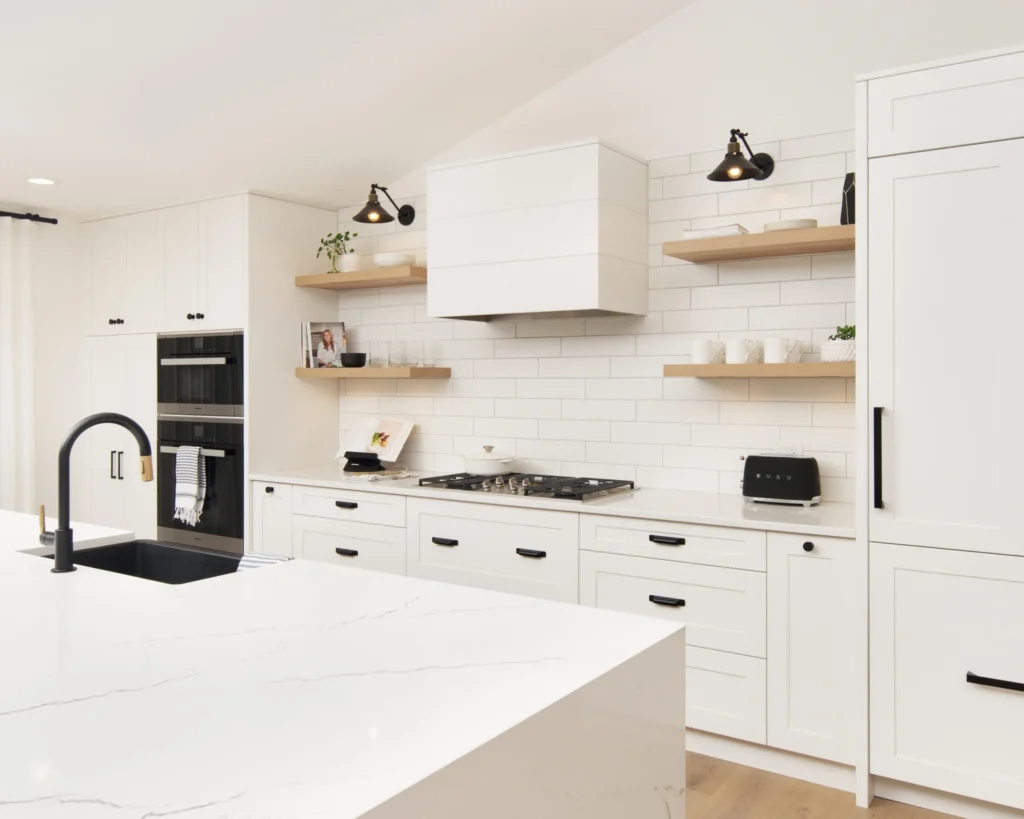
Small-space playbook
| Choice | Why |
| Full-overlay doors | Fewer visual breaks |
| 2–2.25″ rails | Lighter look |
| Light paint or soft greige | Opens the room |
| Clean backsplash lines | Reduces noise |
| Under-cabinet strips | Shadow-free counters |
Storage tips
Use drawers over doors for pots and bowls. Add a pull-out trash next to the sink. Use a tall pantry with rollout trays. Keep counters clear; add a charging drawer so cords disappear. A narrow island or work table beats a bulky block. Measure aisles; aim for 42″ where you work and 48–54″ near seating.
What backsplash complements Shaker lines? (Island accent angle)
A second take for island-led kitchens: let the island be the hero and keep the wall quiet. Use a matte tile in the cabinet color family or a calm stone that echoes the counter.
When the island is bold, anchors and walls need restraint. Balance strong color with warm wood stools and soft metal finishes.
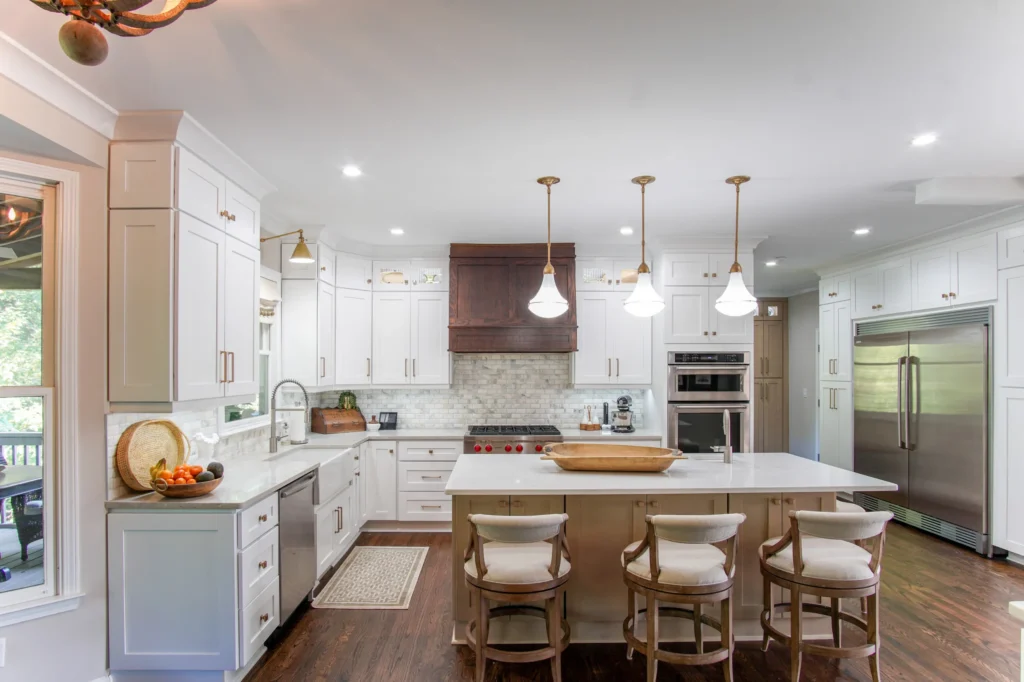
Keep the hierarchy
- One hero (island or wall), not both.
- Repeat the island color in two small places.
- Match grout to tile to avoid extra lines.
What flooring matches Shaker simplicity?
Wood planks, stone-look porcelain, or quiet concrete pair well. Medium tones hide dirt. Very dark floors show dust. Very light floors show scuffs.
Run planks lengthwise with the room. Keep transitions clean at thresholds. If patterns are used, keep them subtle so frames stay the visual guide.
【Warm medium-tone wood floors beneath white Shaker cabinets | Google Image: “kitchen medium tone wood floor shaker cabinets”】
Flooring choices
| Material | Pros | Watch-outs |
| Engineered wood | Warm, repairable | Water vigilance |
| Porcelain | Tough, easy care | Hard underfoot |
| LVP | Budget, water resistant | Look varies by quality |
| Concrete | Modern, seamless | Cold; needs rugs |
Which lighting flatters Shaker cabinets best?
Layered lighting shows the frames without harsh shadows. Use bright task light on counters, warm pendants over islands, and soft ceiling fill. Light the backsplash to outline the geometry.
Put task and ambient on separate dimmers. Choose warmer bulbs where people sit and talk. Use neutral white on prep zones.
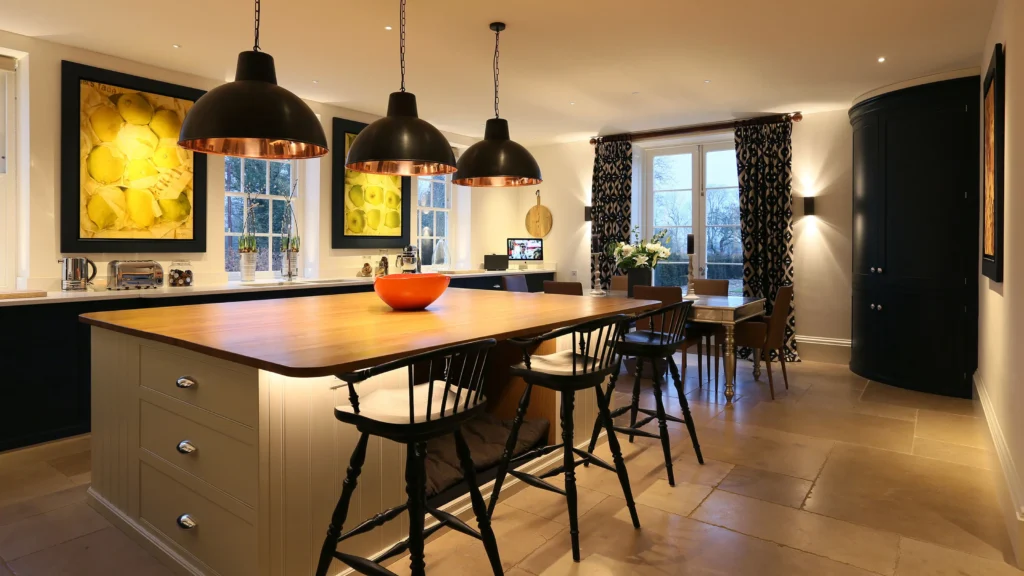
Simple lighting plan
| Zone | Fixture | Goal |
| Counters | Under-cab strips | Shadow-free work |
| Island | Pendants | Warm, low glare |
| Ceiling | Recessed | Even fill |
| Walls | Sconces (optional) | Depth and focus |
Are Shaker cabinets good for resale value?
Yes. Calm, neutral rooms sell. Shaker reads familiar, flexible, and well-built. Buyers can change hardware and paint later without replacing doors.
Keep colors market-friendly if you plan to sell soon: warm whites, greiges, or soft mid-tones. Avoid fussy details and hard-to-clean finishes.
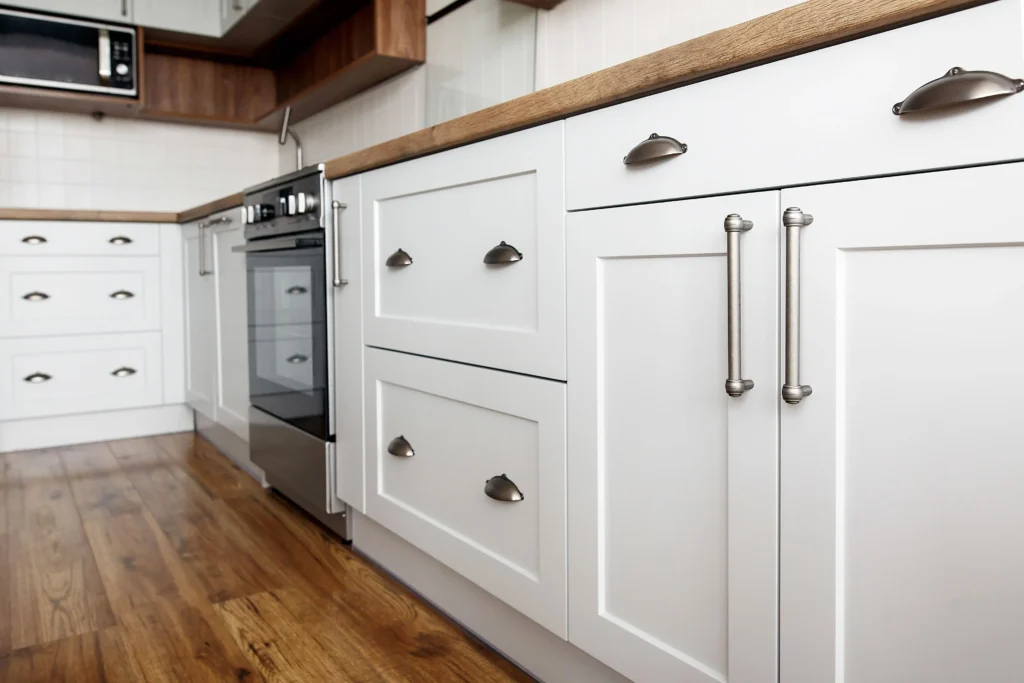
Resale checklist
- Neutral cabinet color.
- Clean counters and lighting.
- Functional storage and quiet hardware.
- Simple, durable backsplash.
What mistakes make Shaker kitchens feel busy?
Too many finishes. Heavy rails with busy tile. Bold stone plus bold grout. Hardware styles that do not match. Poor lighting that adds harsh shadows.
Pick one hero. Keep edges simple. Align hardware. Reduce grout contrast if your stone has movement. Use dimmers to tune the mood.
【Before-and-after mockup: busy mix vs simplified palette | Google Image: “shaker kitchen mistakes too many finishes before after”】
Simplify fast
- One metal finish across the room.
- One strong color, others support.
- Quiet backsplash if counters move.
- Consistent hardware scale.
Conclusion
Shaker is a clear framework. Give it modern choices—slim rails, simple edges, layered light, and a calm palette. Your kitchen stays flexible, easy to live in, and hard to date.
FAQ
Are Shaker cabinets modern or traditional?
Both. The frame is classic, but slim rails, matte finishes, and clean hardware push the look modern. Color and lighting decide which side leads.
What colors are best for modern Shaker kitchens?
Warm white, greige, putty, and soft mushroom feel calm. Deep navy, forest, or charcoal read modern with matte finishes and simple hardware.
Are Shaker cabinets hard to clean?
No. The frame has shallow grooves that wipe with a damp cloth. Use soft brushes for corners. Matte and satin paints hide prints better than gloss.
Do Shaker cabinets work in small kitchens?
Yes. Use full-overlay doors, slim rails, light colors, and strong task lighting. Pick drawers over doors and keep the backsplash simple to reduce visual noise.
Can I mix Shaker doors with slab drawers?
Yes. Slab drawers create a sleek base line. Shaker doors keep structure on tall runs. Use one hardware style so the mix feels intentional.
What hardware finish pairs best with Shaker?
Matte black, brushed nickel, and warm brass all work. Pick one finish and use it everywhere. Scale pulls to door size for good grip and clean lines.
Is two-tone Shaker still in style?
Yes. Keep counters consistent and change cabinet color by zone. Darker lowers and a lighter perimeter, or a deeper island, keep balance and interest.
Which countertops match Shaker best?
Natural stone or engineered quartz for everyday use; sintered slabs for a thin, modern line; wood for a warm seating edge. Keep edges square or with a small radius.

